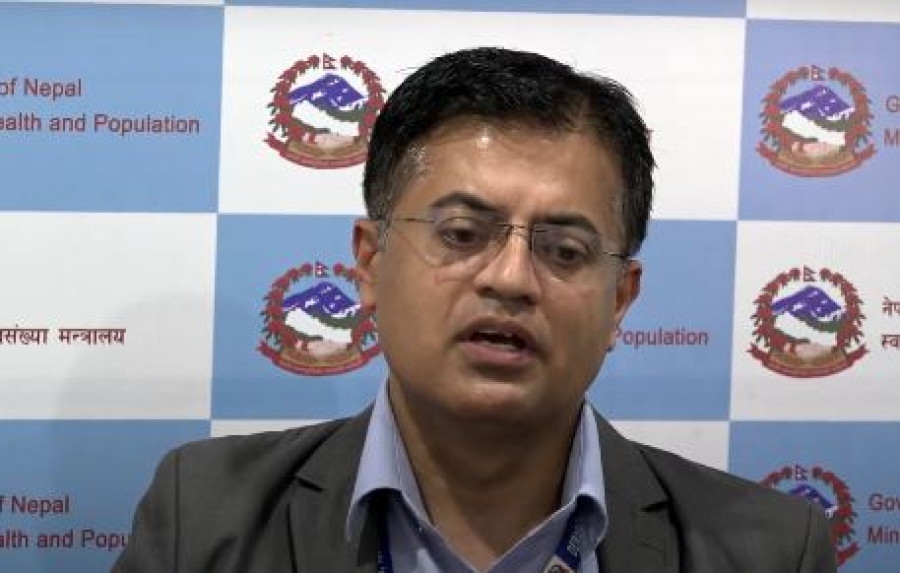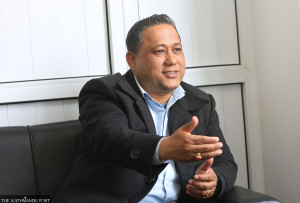Interviews
‘Prohibitory orders help break chain of infection, but the time should be used for preparations’
Dr Krishna Prasad Paudel, director of the Epidemiology and Disease Control Division, on the virus situation and what authorities at various levels must do to contain its spread.
Arjun Poudel
Amid a massive surge in the number of coronavirus cases, with hospital beds filling up and ventilators running out, the government has enforced prohibitory orders in Kathmandu, Bhaktapur and Lalitpur of Kathmandu Valley, which has emerged as a major hotspot, starting Thursday. Of the total new cases recorded–4,364–across the country on Tuesday, the Valley reported nearly half of the new cases–1,966. Nepal’s R, or reproduction, number is higher than even that of India, which is battling one of the biggest humanitarian crises. The R number of a virus is defined as how easily it spreads in the population. As of Tuesday, the number of active cases stood at 26,225. The death toll on Tuesday reached 3,194. The Post’s Arjun Poudel spoke with Dr Krishna Prasad Paudel, director at the Epidemiology and Disease Control Division, about the current situation and what the authorities should do in the next two weeks.
This interview has been condensed for clarity.
What is the existing situation of coronavirus infections in Nepal? What made the government enforce prohibitory orders from Thursday?
At present, the coronavirus is spreading rampantly throughout the country. Health facilities designated for the treatment of Covid-19 patients have already been running in their full capacity. The prohibitory orders have been enforced as an immediate measure is required to break the virus transmission chain. Actually, we are already late in enforcing such restrictions. We had been trying to convince authorities concerned to enforce restrictions for the last few days, apprising them of the ongoing situation.
The decision to enforce restrictions is not a choice but a compulsion, given the latest situation. Infections have been spreading so much that we do not have any other options at present. The crisis could further deepen if we do not impose restrictions now.
What will the authorities do in the next 15 days, as they have failed in the past to utilise the lockdown and restriction period?
Prohibitory orders could be extended further as per the situation. During this period, we have to increase testing and expand tests in communities, find out hotspots and set up isolation and quarantine centres. We also need to enhance our treatment capacity. Provincial governments can reach an agreement with health facilities having a 200-bed capacity. The federal government also can reach a similar deal with hospitals having more than 200 beds and seek the support of private medical colleges to arrange beds and treatment. Other works include arranging drugs and personal protective equipment. One key issue is raising public awareness. Prohibitory orders while help break the virus transmission chain, they also provide an opportunity for authorities to prepare.
The three tiers of government are in place in the country but there is a lack of coordination between them. There is a lack of coordination among agencies under the federal government. Do you think such non-coordination also fuelled the virus crisis?
Yes, there are problems when it comes to coordination between three tiers of government but we should not forget that federalism is a new experience for us. But we have to deal with the pandemic anyhow. We should not be too critical of the federal system, as it is in the implementation phase.
We are trying to coordinate and make all agencies concerned responsible for our respective duties. We are working to strengthen communication between the agencies concerned, forge an understanding of our collective responsibilities and improve coordination and collaboration.
Without coordination and collaboration among all concerned agencies and the help of the general public, we cannot win the fight against the pandemic.
Local levels, which are responsible for contact tracing, monitoring the condition of infected persons and collecting swab samples do not seem to be doing their jobs. How can we contain the virus spread without resuming contact tracing and collecting swab samples for testing?
Yes, local levels are still not collecting swab samples and they have yet to resume contact tracing. We know that without doing so we cannot achieve the goal of breaking the chain. We have formed committees in districts and have requested local levels to start collecting swab samples. All agencies concerned should shoulder their responsibilities.
Last year, a nationwide lockdown was imposed for four months, but it was not of much help. Are restrictive measures the only way and for how long such measures can be put in place or extended?
The government will increase the restriction period as per the situation but that does not mean that restriction is the solution. And what is also true and we should not forget is restrictions cannot be extended for an indefinite period. Restrictions should be imposed only to break the chain of infection and to better prepare ourselves to deal with the diseases.
Restrictive measures should have been the last resort to save lives but in our context, the government seems to be using it as the only way to deal with the pandemic. What other measures should/could have been taken to prepare ourselves as a second wave was imminent?
By enforcing a lockdown, Bangladesh has reduced the [virus] reproduction rate to less than 1. Currently, the reproduction number of the virus in our country is more than 2. India’s daily infections and deaths are devastating, but the virus reproduction number stands at around 1.5 percent. These numbers tell how easily the virus spread in the population. The reproduction number is the average number of people on to whom an infected person will pass the virus. Currently, the reproduction number in Nepal is higher than in India. If we do not take containment measures right now, it will be very much difficult for us to break the transmission chain. Our existing system, hospital beds, intensive care unit beds, and ventilators will be so overwhelmed soon that we won't be able to save lives.
Infected people, who can be saved, may die if our system collapses. We should increase testing, make contact tracing effective for early diagnosis, isolate the infected people and pull out all the stops to break the chain of infection. Those coming from abroad should be placed in quarantine strictly. All these things should be done simultaneously.
Which variant is responsible for the current spike in the infection?
We have found both the UK variant, known as B.1.1.,7 and Indian “double mutant”, known as B.1.617 here in Nepal. The whole-genome sequencing carried out in the World Health Organisation’s collaborating centre in Hong Kong shows the UK variant, which is highly contagious and possibly more lethal, is dominant in Nepal.
But the “double mutant” can also be responsible for the current spike, as its presence has been confirmed in the country.
We are trying to carry out additional whole-genome sequencing within the country.
Authorities have to take strict measures when it comes to regulating border points. Don't they?
It is not possible to seal the border and a lot of our people returning from India will suffer a lot if we seal the border. We have to regulate it in a better and effective way.
But we have not been able to do it effectively.
The government has decided to set up holding centres and quarantine facilities near border points. Concerned agencies should speed up work and all the people returning from India should be placed in such holding centres and quarantines and sent home only after ensuring that they will not spread the virus in society.




 13.12°C Kathmandu
13.12°C Kathmandu











%20(1).jpg&w=300&height=200)

